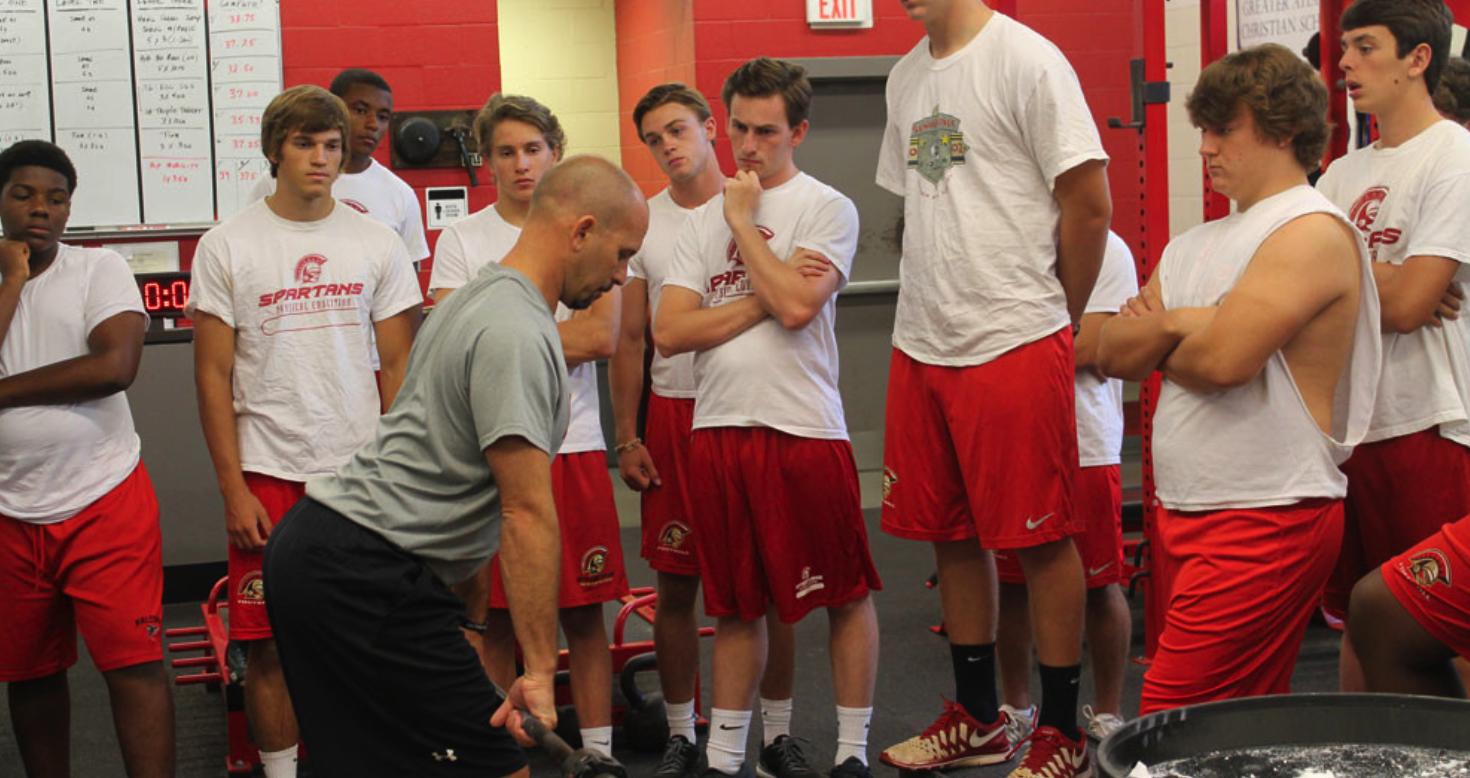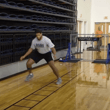There are over 8 million high school athletes in the U.S. and about 480,000 will be playing in college athletics. For some high school athletes, their first-time training is typically in the high school weight room and a designated/qualified strength and conditioning coach is most likely not part of the athlete’s regiment. The training is traditionally coordinated by the sports head or assistant coach and many of them don’t have any type of degree associated with exercise science. When you really think about it, it doesn’t make much sense. With so many injuries in sports and with so many ways to safely train athletes why aren’t more high schools adding strength and conditioning professionals?
I’ve been working with high school coaches for the past 4-5 years and I’ve realized that the heart of the issue is that the decision makers don’t fully understand the need for a full-time designated strength and conditioning coach. The strength coach is much more than a coach that teaches student-athletes how to lift weights and they have a much larger impact on the athletic department than most would think.
Time and Freedom
The freedom for sport coaches to focus more on their sport instead of athletic development “will give each sport coach 2-4 hours of additional time each week to do what they originally signed up for – to be a head/assistant sport coach” according to Ryan Faer. In absence of the S&C coach, sport coaches will need to plan their own workouts, and coordinate with other coaches on weight room scheduling times for each sport. These logistical headaches are eliminated with the addition of a S&C coach.
Imagine having a designated coach that only focuses on the athletes physical, and mental being. Without a S&C coach this is typically up to the sport coach which in most cases is game planning for their next game. A full time S&C like PJ Greybeck “will go and watch the teams play and take notice of how the teams are playing. Do they look sluggish or tired? Are they getting pushed around? Did the team look strong at the end of the game? Seeing this allows me to adjust in the weight room and specialize the workouts for individual players or teams”. More time leads to attention to detail and individualized programming to focus on each athlete.
Safety Considerations
A qualified strength coach with certifications and credentials in exercise science, bio-mechanics, CSCS, etc. is who should be shaping the athletes in the high school weight room. Having the knowledge and background to properly develop workouts based on athletes birth-year age, developmental age and training age are important for safety and long-term athletic development. One of the many responsibilities of the S&C coach is injury prevention since they are the subject matter expert on muscle, body function and movement. They’re able to design workouts as well as teach proper lifting, spotting, and stretching technique to reduce injuries and to maximize athletic performance.
Unfortunately, I’ve personally witnessed at the high school level improper technique, over training, and numerous other risk factors.
“We do not put fitness on movement dysfunction.” Gray Cook
Simpler defined, coaches are not going to load faulty movement patterns at the risk of injuring an athlete. One of the S&C coach goals is to get their athletes stronger, but the athlete needs to have full body control before any resistance can be added. It can be a slow start for some athletes with minimal weight training experience because they may want to get right to lifting heavy weight, but the S&C coach is there to ensure proper form and progressions are being made and monitored. I’ve even seen some coaches eliminate record boards as it can promote athletes over loading exercises just to make the record boards which can result in injury if the athlete has poor form. The S&C coach creates awareness and safety in the weight room that the unqualified most likely won’t even consider.
Bridging the Gap
The strength coach can help bridge the gap between the injured athlete and the medical staff. When an athlete is injured, they are evaluated by the athletic trainer daily. The athletic trainer will create a return-to-play protocol for the athlete as well as treatment. The athletic trainer can communicate with the strength coach so that special programming is created in the weight room. This combination of the athletic trainer and the strength coach benefits the athlete the most. The athletic trainer knows how to treat the injury and the strength and conditioning coach understands the limitations in the weight room to develop an individualized program for the athlete.
Improve Performance
The strength coach is trained to improve athletic performance. Strength and conditioning programs are built and implemented by the strength coach and these programs and the exercises are carefully implemented so that athletes can maximize their training. Training safely, efficiently, and smart are part of the coach’s job and they’re the expert. You can’t just have kids squatting and benching every day. Proper scheduling, rest, progressions and variation are key to reducing athlete’s injuries and improving their athletic performance.
Having an expert in recovery, speed, and technology can add value to any athletic department. With loads of information and technology consistently changing the strength coach is versed in sports science and understands how to analyze the data from GPS, wearables, heart rate and other analytics.
Culture
Strength programs and coaches can have a lifetime impact on student-athletes and have the ability to create a thriving culture.
“The training environment goes beyond athletic performance. It teaches students to overcome fears and achieve goals. Unlike traditional classes and sports, a properly designed strength and conditioning program tracks personal progress and teaches students to embrace the process of getting better every day”. Micah Kurtz
In some programs the strength coach is the only coach the athletes communicate with each day. This gives them the ability to create a culture that focuses on safety, education, motivation, participation, goal setting, leadership, and accountability.
The strength and conditioning coach adds value to any athletic department. The qualified experts help free up time, bridge the gap between the athletic trainer, build culture, improve athletic performance all while being conscious of safety considerations. It’s important that everyone understands why they are needed full-time at the high school level. If you’re looking for more details on the importance of a high school strength and conditioning, I highly recommend visiting the National High School Strength and Conditioning Association (NHSSCA) website. The NHSSCA unifies S&C coaches by educating, equipping, and empowering them to make a positive impact on the lives of student athletes. The NHSSCA provides resources to help high schools implement a full-time strength and conditioning coach.





















